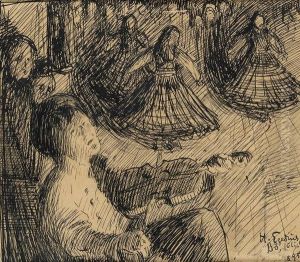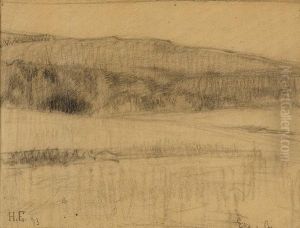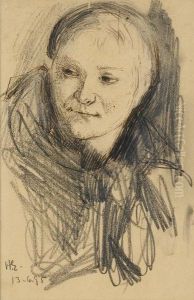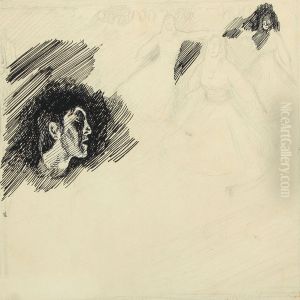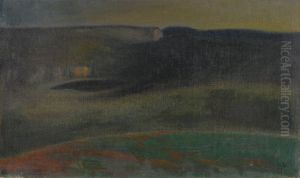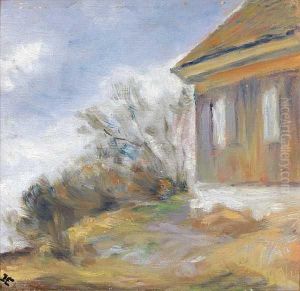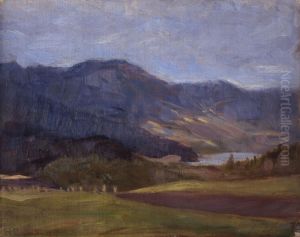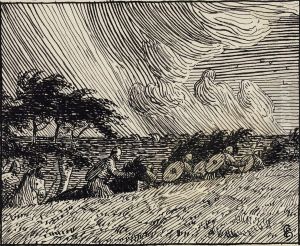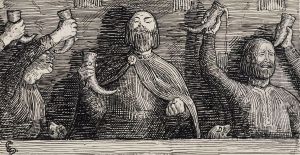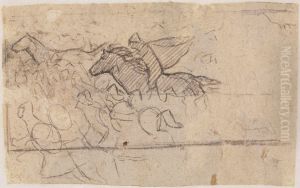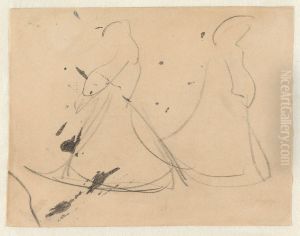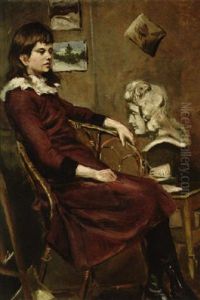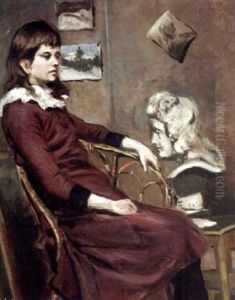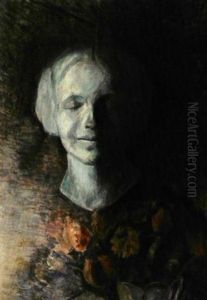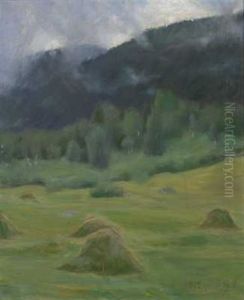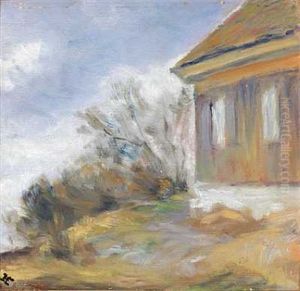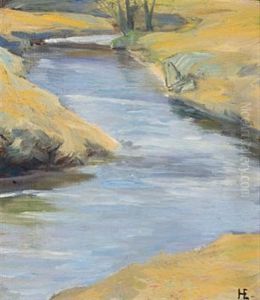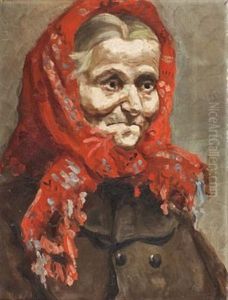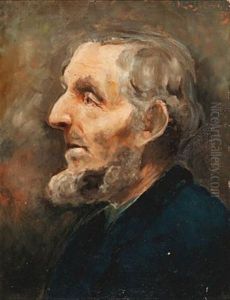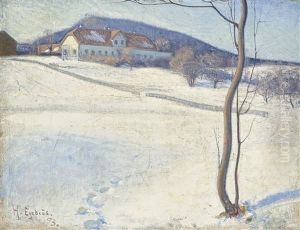Halfdan Egedius Paintings
Halfdan Egedius was a Norwegian painter and illustrator who is remembered for his distinctive contributions to art at the close of the 19th century, despite his brief life. Born on May 5, 1877, in Drammen, Norway, he showed remarkable artistic talent from a young age. Egedius grew up in a time of national romanticism in Norway, where there was a strong interest in building a distinct national identity that drew from the country's history, culture, and landscape.
Egedius began his formal art education at the age of 11 when he enrolled at the Royal School of Art and Design of Christiania (now Oslo). There, he was taught by some of the most prominent Norwegian artists of the time, including Erik Werenskiold and Eilif Peterssen, who had a significant influence on his development as an artist. Egedius quickly absorbed the lessons of his mentors and developed a style that was characterized by a naturalistic portrayal of the Norwegian landscape and people, imbued with a sense of romantic nationalism.
Despite his youth, Egedius achieved considerable success early in his career. He received critical acclaim for his illustrations of the medieval Icelandic sagas and Norwegian folktales, which were published in several books. His illustrations for the 1897 edition of 'Heimskringla', a collection of sagas about the Norwegian kings, written by the Icelandic historian Snorri Sturluson, are particularly celebrated. These works were notable for their vivid imagery and ability to capture the spirit of the sagas.
Egedius' paintings also garnered attention, with his landscape works particularly admired for their atmospheric quality and sensitive treatment of light. His portraits are equally significant, with many of them capturing the people of Norway with a haunting intensity that suggests an understanding of character far beyond his years.
Tragically, Halfdan Egedius's promising career was cut short by his untimely death at the age of 21. He succumbed to tuberculosis on February 2, 1899. His death was a blow to the Norwegian art community, which had seen in him the emergence of a truly talented artist who had the potential to contribute much more to the nation's cultural heritage. Despite his short life, Egedius left behind a body of work that continues to be celebrated in Norway and beyond for its beauty and historical significance.
